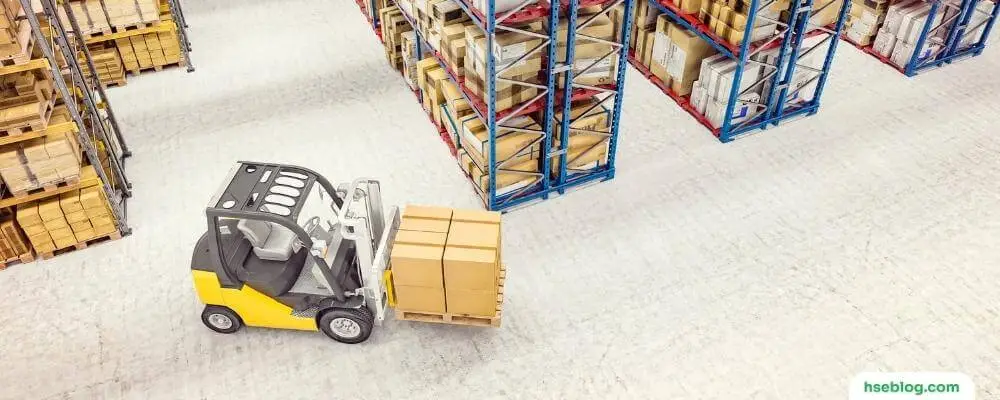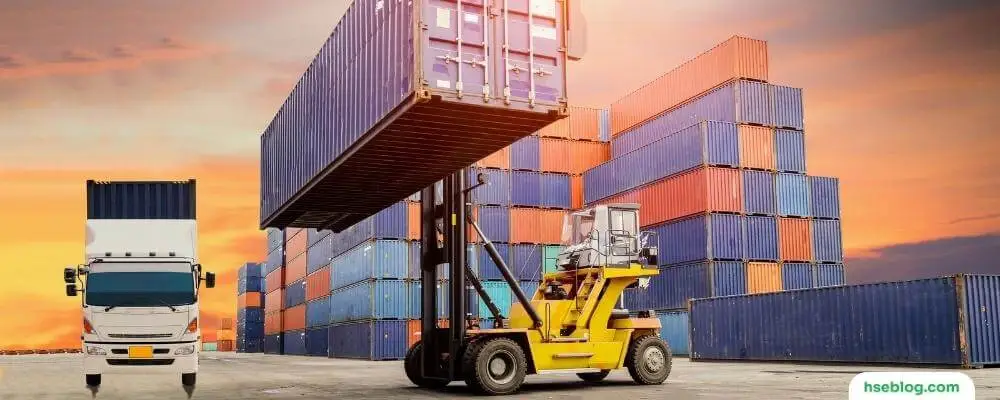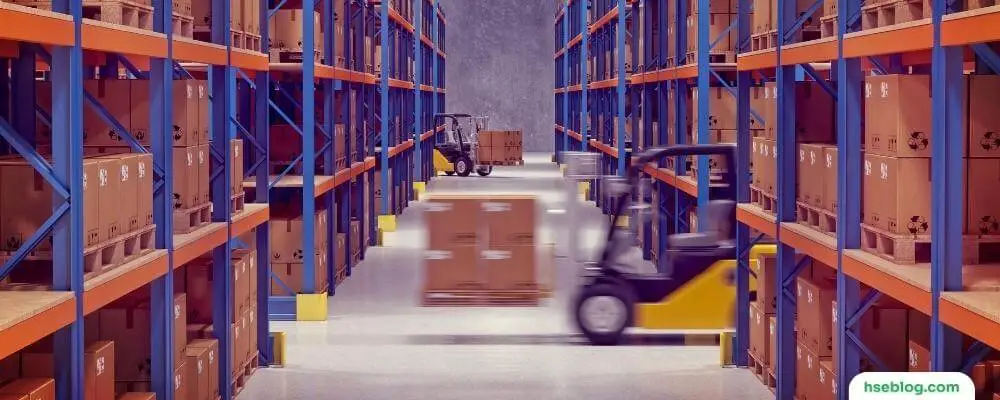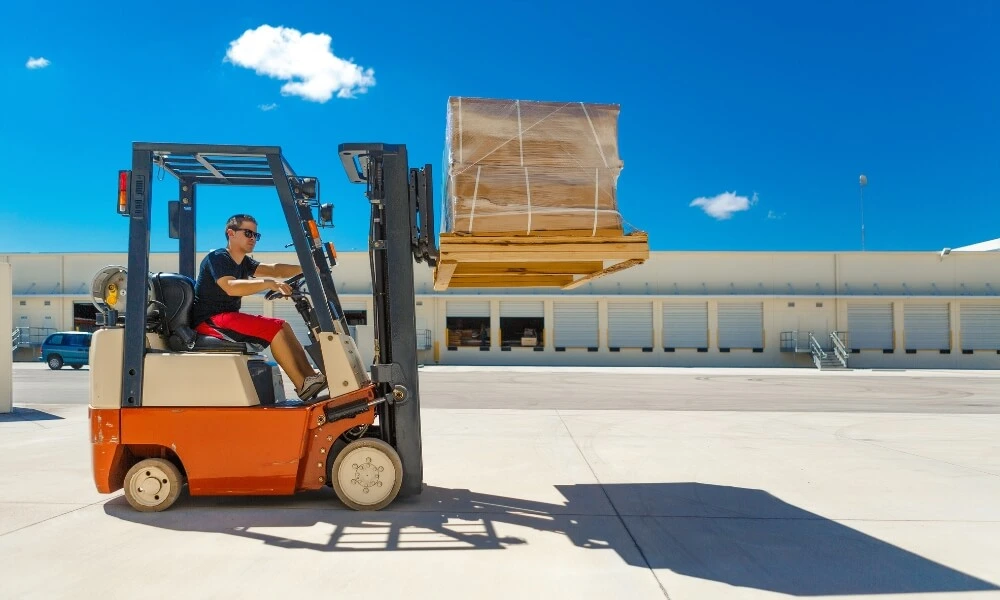In the fast-paced environments of warehouses, construction sites, and manufacturing plants, forklifts are indispensable tools. However, as essential as they are, forklifts can also be sources of serious accidents and injuries when not handled correctly. Operators and management alike must be well-versed in the safety protocols and the potential hazards associated with forklift usage.
This comprehensive blog will delve into 15 critical forklift safety rules that should never be overlooked and 10 common hazards that must be guarded against. Whether you are an experienced forklift operator, a safety manager, or new to the industry, this blog will equip you with invaluable insights to ensure a safer and more productive workplace. Buckle up as we navigate the intricacies of forklift safety and hazard prevention.
Forklift Safety Importance
The importance of forklift safety cannot be overstated. Here are the key reasons why it is essential:
- Preventing Injuries and Fatalities: Forklifts can be extremely dangerous if not operated safely. Improper handling can lead to accidents, causing severe injuries or even fatalities. Ensuring safety measures are in place significantly reduces these risks.
- Increasing Productivity: When a forklift is operated safely, it is more likely to be used efficiently. Safety protocols can help reduce unnecessary slowdowns and ensure that the forklift is always ready and in good working condition, thus increasing productivity.
- Avoiding Financial Losses: Accidents cause human suffering and can lead to significant financial losses. This includes the costs associated with medical expenses, damage to goods or property, and legal fees if the company is negligent.
- Compliance with Regulations: In many countries, workplace safety, especially concerning forklift operations, is regulated by law. Ensuring forklift safety helps in compliance with these regulations and can save the company from fines and legal troubles.
- Protecting Company Reputation: A company known for having a safe work environment is likelier to have a good reputation among its clients, partners, and potential employees. Conversely, a company known for accidents and unsafe practices may find it harder to attract business and talent.
- Reducing Downtime: Accidents often result in downtime, as the incident area may need to be cleared and investigated and damaged equipment repaired. This can be costly in terms of both time and money. Safety practices help to minimize these incidents.
- Employee Morale and Retention: Employees who feel safe at work are more likely to be satisfied with their jobs. This can lead to higher morale and productivity. In contrast, a workplace that doesn’t prioritize safety can lead to high employee turnover.
- Insurance Costs: By adhering to safety protocols, companies may be able to reduce their insurance premiums. Many insurance companies offer lower rates to businesses that can demonstrate a commitment to safety.
- Customer Trust and Loyalty: Customers and clients are likelier to trust and stay loyal to a company that prioritizes safety. They want the assurance that the products and services they receive are handled safely and responsibly.
- Creating a Safety Culture: Implementing forklift safety protocols is part of building a broader safety culture within the organization. This culture of safety can extend beyond forklift operations and contribute to making the workplace safer and more secure for everyone involved.
Forklift safety is an essential component of any business that utilizes these vehicles. It protects not only the employees but also the financial health and reputation of the company. A commitment to forklift safety is a commitment to a sustainable and successful business.

10 Forklift Hazards To Prevent Them
Forklifts, though extremely useful for lifting and transporting heavy loads, present numerous hazards in the workplace. It is critical to recognize these hazards to implement appropriate safety measures. Here are some common forklift hazards:
- Overloading: Exceeding the forklift’s load capacity can cause the vehicle to become unstable and tip over.
- Poor Visibility: Operating a forklift with an obstructed view can lead to collisions with objects or people.
- Lifting Personnel: Using a forklift to lift people without proper safety equipment, such as a safety cage, can cause falls and injuries.
- Inadequate Training: Operators without proper training are likelier to make mistakes and cause accidents.
- High Speeds: Driving the forklift too fast, especially with a load, can make it harder to control and increase the risk of tipping or collision.
- Inadequate Maintenance: Failing to properly maintain a forklift can lead to equipment failures, such as brake malfunction or steering issues.
- Working Near Edges and Ramps: Operating a forklift near dock edges, loading platforms, or ramps can be dangerous, as the forklift can fall off the edge.
- Pedestrian Traffic: Working in areas with high pedestrian traffic increases the risk of collision with people, especially if the paths are not clearly marked.
- Unsafe Stacking/Loading: Improperly stacking or loading materials can cause the load to shift or fall during transport.
- Hazardous Materials: Handling hazardous materials without proper procedures and equipment can lead to spills, exposure, and contamination.
It’s essential to be aware of these hazards and to follow safety protocols to minimize the risks associated with forklift operations. Proper training, maintenance, and adherence to safety procedures are critical in preventing accidents and injuries.

15 Forklift Safety Rules
Forklift Safety Rules are guidelines and procedures established to ensure the safe operation of forklifts. These rules are crucial in preventing accidents and injuries in workplaces where forklifts are used. Here is a concise list of important forklift safety rules:
1. Complete Forklift Certification
Ensuring that operators have proper certification is vital. Certification indicates that the operator has undergone a structured training program that includes hands-on experience, learning safety protocols, and being evaluated for competency. This training familiarizes them with different types of forklifts, how to handle loads, and how to react in emergency situations. OSHA standards require that certification is renewed every three years, ensuring operators’ skills and knowledge remain current.
2. Wear Proper Safety Gear
Wearing the right safety equipment minimizes the risk of injury. Safety shoes, for example, protect the operator’s feet from falling objects and offer a better grip on the forklift’s pedals. Hard hats are essential as they protect the head from falling debris. High-visibility jackets are crucial, especially in areas with other vehicular traffic, as they make the operator easily visible, reducing the risk of collisions.
3. Understand the Forklift’s Class and Specifications
Knowing the forklift class and specifications is essential. Different forklifts are designed for different purposes, and knowing the capabilities of the specific model you are operating ensures you use it within its safe operational limits. Familiarizing yourself with the operator’s manual provides valuable information such as weight limits, speed capabilities, and safety features specific to that forklift. This information is vital for the operator to make informed decisions during operation.
4. Conduct Daily Equipment Inspections
Performing daily inspections helps identify issues before they become major problems. An operator should check the forklift’s tires for any punctures or wear, ensure the brakes are working properly, verifying the lights and horn are operational, and inspect the forks for any bends or cracks. Any issues found should be reported to a supervisor and addressed immediately. These daily checks are a proactive approach to maintaining the equipment and ensuring the safety of the operator and others in the vicinity.
5. Maintain 360° Visibility
Maintaining clear visibility in all directions is crucial for safe operation. If a load obstructs the operator’s forward view, the forklift should be driven in reverse. Operators should always make eye contact with pedestrians to ensure they know the forklift’s movements. Using rear-view mirrors and headlights in low-light conditions further enhances visibility. Maintaining 360° visibility significantly reduces the chances of collisions and accidents.

6. Use Floor Marking Systems
Implementing floor marking systems helps organize traffic flow and define safe paths for forklift operations and pedestrian traffic. This can be especially helpful in areas where forklifts and pedestrians share the same space. Clearly marked paths make it easier for operators to navigate the premises and for pedestrians to know which areas to avoid. This ultimately reduces the risk of collisions and enhances overall safety.
7. Do Not Exceed Load Capacity
A forklift is designed to carry loads up to a certain weight. Exceeding this capacity makes the forklift unstable and significantly increases the risk of tipping over. Understanding and adhering to the load capacity is essential. This information can be found in the operator’s manual. Overloading can cause forklift accidents and damage, leading to costly repairs and downtime.
8. Prohibit Passengers
Forklifts are generally designed for a single operator. Allowing passengers can distract the operator and causes an imbalance which can lead to accidents. If there’s a need to transport a person, only do so if the forklift is designed to carry passengers safely. Otherwise, it is best to avoid carrying any passengers.
9. Monitor Forklift Stability
Understanding the forklift stability triangle and center of gravity is crucial for safe operation.. The stability of the forklift is greatly affected by the load it carries. An unevenly distributed load or a high center of gravity can cause the forklift to become unstable. Ensuring that the load is evenly distributed and the forklift is operated on a stable surface is crucial.
10. Secure and Stabilize Loads
Before moving, make sure that the load is properly secured and stabilized. This means checking that the load is evenly balanced on the forks and secured with straps if necessary. Tilt the load backward and keep the forks low to the ground during transit to improve stability and prevent the load from falling off.

11. Adhere to Speed Limits
Operating the forklift at a safe speed is crucial. This ensures the operator has control over the vehicle, especially during turns. Sudden stops, sharp turns, or rapid acceleration can make the forklift unstable, especially when carrying a load. Adhering to speed limits and operating the forklift smoothly and predictably increases safety.
12. Maintain Safe Distances from Other Equipment
Keeping a safe distance from other machinery and forklifts allows operators more time to react to unexpected movements. This is particularly important in busy warehouses or sites with multiple vehicles and equipment.
13. Avoid Positioning Under Loads
The load is likely to fall when a forklift is lifting or lowering it. Operators and pedestrians should never stand or walk under elevated loads or forklift arms. This practice prevents injuries from falling loads.
14. Safely Refuel or Recharge the Forklift
Refueling or recharging should be done in a designated area that is well-ventilated and free from open flames or sparks. Before refueling or recharging, the forklift should be turned off. This prevents the risk of fire or explosion due to fuel or battery vapors coming into contact with electrical components or hot surfaces.
15. Properly Park the Forklift
When not in use, the forklift should be parked in designated areas. This ensures that it does not obstruct walkways or exits, which could be crucial in emergencies. Before leaving the forklift, lower the forks to the ground, apply the parking brake, turn off the engine, and remove the keys. This prevents unauthorized or untrained individuals from operating the forklift and ensures it doesn’t inadvertently move.
Conclusion
The 15 forklift safety rules and 10 hazards we’ve discussed underline the critical role of safety in any workplace where forklifts are utilized. By understanding and adhering to these safety rules, operators can reduce accidents and injuries effectively. Furthermore, by being aware of and prepared for potential hazards, we can prevent them and foster a safer, more efficient work environment. Remember, safety isn’t just about following rules—it’s about creating a culture of vigilance and accountability. Everyone in the workplace has a role to play in ensuring forklift safety, from operators to supervisors to pedestrians. Always prioritize safety—it saves lives and enhances productivity.

